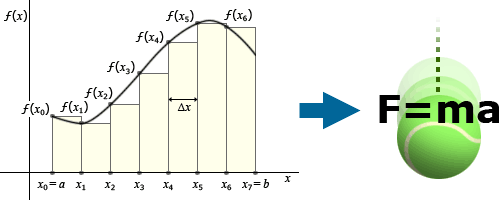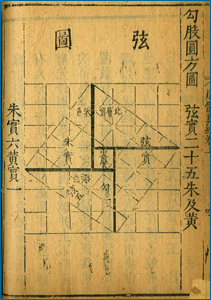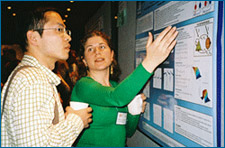Two plus two equals four may not be rocket science, but is it science? Math is frequently associated with science and is certainly relied upon by scientists — the pages of any modern biology, chemistry, physics, geology, or psychology journal are peppered with calculations, statistics, graphs, and mathematical models — but how much like science is math itself?

The answer depends on one’s philosophical views on the nature of mathematics — and in this area, philosophers and mathematicians have not reached a consensus. For example, some view mathematics as sets of rules we’ve constructed for manipulating abstract entities — entities which may or may not have any relation to the real world. Others view mathematics as the deeply embedded structure of the natural world itself, which must be “discovered” just as protons, neutrons, and electrons were discovered. Many other views of mathematics also exist. Here, we consider these common views of mathematics and use the Science Checklist to see how similar mathematics and science really are.
![]() Focuses on the natural world?
Focuses on the natural world?
Often math is seen as dealing with entities that have parallels in the natural world but don’t themselves exist in that world. Unlike, say, ants or atoms, the number two is not generally viewed as a physical entity, but as a powerful abstraction that can be used to describe physical entities. On the other hand, one could also argue that mathematical abstractions arise directly from the natural world — that the fact that two ants plus two ants yields a set of four ants is simply a description of how objects exist in the natural world.

![]() Aims to explain the natural world?
Aims to explain the natural world?
Many mathematicians work on problems that help us understand and explain the natural world. For example, Isaac Newton’s discovery of the basic rules of motion was made possible by the advances he made in calculus. While some mathematical disciplines (e.g., applied math) are aimed at helping us understand real-world physical entities, others (e.g., algebraic geometry) mainly focus on advancing abstract mathematical knowledge — though even this abstract knowledge is often found to have real-world applications later on. And, of course, taking an entirely different perspective, if one views mathematics as embedded in the structure of the natural world, then all mathematical investigations could be seen as aiming to explain the natural world.
![]() Uses testable ideas?
Uses testable ideas?
Mathematical ideas are testable — but not generally against evidence from the natural world, as in biology, chemistry, physics, and similar disciplines. Instead, mathematical ideas that are not yet proven may be tested computationally. For example, we can test the idea that every even integer greater than two is the sum of two prime numbers. To test this, simply consider many different even numbers and try to find two prime numbers that add up to each of them. How about 6? That works because 3 is prime, and 3 + 3 = 6. How about 24? That works because 17 and 7 are prime, and 17 + 7 = 24. If we find many sets of numbers that fit with the idea, we have some evidence that the idea is correct. If we find even a single case in which an even number greater than two cannot be written as the sum of two prime numbers, we have strong evidence that the idea is incorrect. This idea is known as the Goldbach conjecture, and whether or not it’s true is still an open question in mathematics. The method of testing described here involves searching for a counterexample to a particular idea, but mathematicians have other ways of testing their ideas as well — and many of these have been applied to the Goldbach conjecture. These sorts of mathematical tests generally do not involve going out into the world to make observations that might support or contradict the idea — though, of course, if one views mathematics as embedded in the structure of the natural world, then simply observing that 3 + 3 = 6 could be seen as stemming from the natural world.

![]() Relies on evidence?
Relies on evidence?
In science, evidence from the natural world can make or break an idea — but the same is not necessarily true in mathematics. The concept of infinity, for example, is mathematically valid whether or not we can find any evidence that an infinite number of anything actually exists in the natural world. Perhaps most importantly, because new evidence and perspectives can lead us to revise them, scientific ideas can never be absolutely proved. Some mathematical ideas, on the other hand, can be absolutely proved.1 The Pythagorean Theorem, for example, can be proved. Mathematicians accept certain basic principles about how numbers work and can then use logic to prove what other ideas must be true based on those foundational ideas.
![]() Involves the scientific community?
Involves the scientific community?
Mathematics relies on its own community. Just as in the scientific community, members of the mathematical community collaborate on projects, scrutinize each others’ ideas, evaluate each others’ work, and maintain ethical standards within the community.
![]() Leads to ongoing research?
Leads to ongoing research?
Mathematical breakthroughs contribute to new discoveries in mathematics and often to new research methods in standard sciences like biology, chemistry, and physics. Even mathematical knowledge that is developed purely abstractly, without any thought towards potential scientific applications, frequently turns out to be useful in scientific research. For example, in 1909, mathematician David Hilbert began developing mathematical tools to study infinite dimensional spaces, which were used more than 10 years later to formalize quantum mechanics — one of the foundational theories of modern physics.

![]() Researchers behave scientifically?
Researchers behave scientifically?
Mathematicians are expected to abide by the same set of rules for “good behavior” as physicists, chemists, and other scientists are expected to follow. They build on the work of other mathematicians, share their ideas and results with others, respond to and incorporate criticism of those ideas, and are expected to “play fair” in their work (e.g., report their results accurately, objectively evaluate others’ research, avoid stealing each others’ ideas, etc.).
Now it’s up to you. How is math similar to and different from science?
To see our answer, click here.
In many ways, math is closely related to science. Mathematics is a scholarly domain, and so the mathematical community works as the scientific community does — mathematicians build on each other’s work and behave in ways that push the discipline forward. This progress contributes to scientific breakthroughs. Mathematics is such a useful tool that science could make few advances without it. However, math and standard sciences, like biology, physics, and chemistry, are distinct in at least one way: how ideas are tested and accepted based on evidence. Math doesn’t rely on testing ideas against evidence from the natural world in the same way that other sciences do. Mathematical ideas are often accepted based on deductive proofs, while ideas in other sciences are generally accepted based on the accumulation of many different observations supporting the idea.Whether or not other features of math align with those of science depends on one’s philosophical commitments. Does math deal with or aim to explain the natural world? Math certainly seems abstract and removed from the physical world in many ways — yet math does a remarkably good job of describing what happens in the physical world (e.g., the orbits of planets or the path of a bouncing ball). Is math an inherent part of how the universe works, or is it a language we’ve constructed to help us describe that universe? The answers to these questions are a matter of debate.
1In fact, in the 1930s, mathematician Kurt Gödel proved that some mathematical ideas cannot be proven true or false.
Thanks to Theodore Slaman and Jon Wilkening for mathematical consultation.
